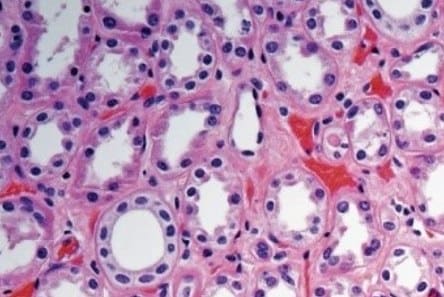As soon as you enter the first year of your MBBS life, you are sure to face many difficulties. It feels like a roller coaster ride that just goes on and on. Many a time, you will face scenarios you’ve never come across before, both good and bad – the only way to get through is to stay strong and focus on accomplishing your goals this year.
Speaking of goals, one of the major burdens you’ll face this year is the unimaginable load of anatomy. Unlike physiology or biochemistry, of which you will have had some prior experience, anatomy is a relatively new subject and is extremely vast.
The first thing you must remember is not to get lost in this vast expanse. This year is about your fundamental subjects and you should focus on strengthening your concepts. Anatomy is not a joke in any manner, but with the right technique and appropriate guidance, nothing will stop you from acing this subject.
We, as medicos ourselves, have had first-hand experience with the new curriculum for Indian students, so hang tight while we ensure your experience in the first year is the best it can be!
In the beginning...
1 Be prepared for this subject. It’s going to be grueling and tough on you, both physically and mentally. You might face issues even from your teachers, who often cannot or just won’t help you. Anatomy, like most subjects in MBBS, is a subject you’ll need to put a lot of time and effort into. Self-study is most important here.
2 Choose your study materials wisely and stick to them. You will need to find your preferred method of study, be it textbooks, class notes, online videos, or any other, and stick to that for the rest of the year. While it’s not impossible to switch later on in the year, it will definitely take adjusting to, which could waste your study time. We will be discussing study materials and how to tackle this later on.
3 Anatomy is a vast subject and one simply cannot hope to remember and recall everything. You need to learn how to prioritize knowledge, i.e. what is essential, semi-essential, and not essential. Of course, you won’t know this on the first day onwards, nor will anyone explain this to you, but you will definitely get the hang of it. And besides, we’re always here for any guidance. 🙂
4 Anatomy departments of most colleges conduct multiple class tests or internal examinations throughout the year. These are good for the revision of various topics so make sure you study well and do attend them! Many of you might feel terrified standing in front of an examiner with only a cadaver and your forceps separating you while your mind goes blank. These vivas are only your practice for the future and you’ll only get better at managing vivas with time. And even if you aren’t able to score too well or even fail, it’s not the end of the world. As long as you do well in your universities, it’s all good.
Overall Tips
Anatomy will take up a lot of your time in the first year. It’s obvious as most of us are excited about it and can imagine ourselves as future surgeons, for whom anatomical knowledge is invaluable. However, this very same love for anatomy reveals it’s a complex subject with no mercy, which many a time leads to exam stress and anxiety. It’s almost as if we are in a one-sided relationship XD.
Best Books for Anatomy
Study materials and books are discussed in this post: Click here!
How to Study Anatomy
Diagrams and Notes
Diagrams are the bread and butter of anatomy. If you want to cope with anatomy, you must familiarize yourself with them. In fact, if you adapt to diagrams efficiently, you won’t ever need to read and re-read those enormous anatomy books at all!
Here I’m giving you a 5-step hack to ace anatomy with nothing but diagrams
Step 1: Familiarize yourself with the diagram in your books, go over it, and understand what all it consists.
Step 2: Read any related texts from your books / watch related videos, and mentally correlate everything you see in your diagram.
Step 3: Redraw the diagram, label it appropriately, and add anything related that you feel is important. Draw it just as you would in your exams, with minimal writing and as much diagrammatical information as possible.
Step 4: Do this for all the topics you can, and make a habit of adding to this list every now and then. By the end of the year, you will have a mini notebook of all your diagrams and you might not need to study anything else for exams.
Step 5: Make sure to practice these frequently, as lack of repetition will definitely lead you to forget points. Don’t memorize the diagrams, instead visualize them as you would in your own body or in the cadaver you’ve dissected – this builds concepts very well and gives you a much better understanding of anatomy. You’re also less likely to forget points.
If you need to make notes, do so, but write them just as you would write your exam answers – write only the important points in a concise format, avoid long paragraphs. Your time is better spent on the diagram, which will certainly fetch you more marks than the paragraph.
Dissection
The D-hall is perhaps the best place for socialization in medical colleges throughout India. I recommend you try not to miss a single dissection, as you’ll definitely learn newer things and in greater detail than you can in lectures or from books. I have seen D-hall classes bring out the best in anatomy teachers and students alike, so don’t waste these opportunities. If possible, after you’ve read sufficiently on the topic, ditch the books and focus only on the cadaver. Discussions with your teachers and classmates during this time are some of the most memorable throughout your MBBS career, and you’ll likely never forget these times.
Now we’ll be going over each topic in Anatomy and how best to tackle it.
Upper and Lower Extremities
This is by far one of the easier topics this year, and you can chug through it without too much effort. Like always, don’t get lost in memorizing unnecessary details and relentlessly pore over books trying to mug up everything.
Ensure you know all your Muscles with their O/I and actions, as well as important Nerves, Blood vessels & lymphatics, and Spaces, Fossae, Relations, etc.
Clinical anatomy is of special importance here. It is quite easy to understand and will fetch you maximum marks in your exams.
For practical purposes, adopting the Kabir Singh method, a.k.a drawing out or visually marking structures on yourself, is a good idea. Though it may seem ridiculous at first, in fact picturizing all the anatomical structures as they are on your own limbs is extremely useful and you’ll never forget this.
The cadaver can be your best friend in the practicals, as everything will be asked based on what you can see, and not much textbook information will be necessary. So do study the cadaver thoroughly for practicals.

Thorax, Abdomen and Pelvis, and Head and Neck
These topics are a little harder to understand compared to the previous one, but as long as you keep up with the pace, these will also pass like a breeze.
Unlike upper and lower extremities, it might actually benefit you to read the entirety of these topics as a novel, provided you have time. This is because you will notice the entire topic is connected, and will enhance your understanding much more. However, you do not need to memorize everything; only jot down the important points along with the diagrams side-by-side.
As always, do not try to memorize things, and especially not one day before the exam (a mistake many have committed) – you will easily forget a majority of things in just a few hours. Instead stick to understanding and correlating all the structures via diagrams and dissections. Clinical anatomy is of utmost importance here also.
Before theory exams, your diagrams are going to be your gold standard revision. In practicals, study all the organs and specimens in the D-hall, as these you’ll be tested on these during practicals. One of the best hacks I’ve personally used is to just click a picture of the specimen and label it on your phone, or make a video of the specimen explaining all the important points in it. These will be invaluable as you’re waiting outside the hall terrified for your turn to give the practical viva!

Neuroanatomy
Neuroanatomy is infamous as one of the toughest topics in anatomy, if not all of medicine. Every student goes through the initial panic phase when they see the plain and unembellished pinkish-grey brain and its related structures, with none of the usual distinctive and identifying features easily seen like in the rest of anatomy.
However, even neuroanatomy is surmountable with the proper preparation. Unlike the rest of anatomy, seeing the specimen is useless without a prior thorough reading of the topic, as you’re likely not going to be able to identify, let alone describe a majority of the structures.
Hence a prior reading along with appropriate diagrammatic study for understanding is necessary for neuroanatomy. Once you’re through, the practical aspect is much more accessible. Be sure to take photos of the specimen and label them as these will be your lifeline for neuroanatomy one day.

Histology
Another infamous subject in anatomy, not because of any inherent complexity, but due to the sheer amount of pink and blue (or Eosin and Hematoxylin, as the nerds call it) one’s eyes have to endure.
Histology is not a very difficult subject once you get the hang of it. You should have a basic idea of tissue types and identification, the rest will automatically start making sense.
For theory exams, make a list of all the histology topics you need to study. All you need to do is make one well-labelled diagram per topic, and it’s only a plus if you know 3-4 additional points related to it. You do not need to pore through the entire textbook unless you’re really interested in this topic.
Do complete your journals in time, as many times you can directly refer these diagrams and points for the exam.
While histology does not carry that many marks overall, it is definitely a scoring topic as you will have histology related to all the organs of gross anatomy so it is easy to relate. You can also add clinical points. Do not ignore histology as it will definitely help you next year when facing histopathology.

Embryology and General Anatomy
These are topics often ignored until the last moment by a majority, while in fact they are very easy and can help in scoring. Embryology especially is very interesting if approached properly.
If you have time and interest in it, I would recommend a cover to cover reading of these subjects. Otherwise, the usual system of just diagrams and important points is always more than enough.

In Summary
We’ve covered in detail every aspect of studying anatomy in the first year. While it is true that nearly half of your time this year will be dedicated to anatomy, do not get over-obsessed with this subject and remember to spare some time for physiology and biochemistry as well.
As you know by now, you need to focus on conceptual learning understanding applications, and having clinical knowledge of the subject rather than rote memorization. We’re here to welcome any further doubts you may have, so please don’t hesitate to contact us or drop a comment down below!
Also Read



